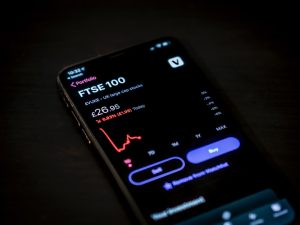Forex robots, also known as Expert Advisors (EAs), are computer programs that automate the process of trading in the foreign exchange market. These robots use pre-defined rules and algorithms to analyze market conditions, identify trading opportunities, and execute trades automatically. Building a forex robot can be a challenging but rewarding experience for traders interested in automation. In this article, we will discuss the steps involved in building forex robots.
Step 1: Define Trading Strategy
The first step in building a forex robot is to define the trading strategy. A trading strategy is a set of rules that determine when and how to enter and exit trades. It is essential to have a clear and concise trading strategy before building a forex robot. The strategy should be well-defined and based on sound technical and fundamental analysis. The strategy should include rules for entry and exit, stop loss, and take profit levels.
Step 2: Choose a Platform
The second step in building a forex robot is to choose a platform. There are several platforms available for building forex robots, including MetaTrader 4, MetaTrader 5, and cTrader. These platforms provide a framework for developing and testing forex robots. It is essential to choose a platform that is easy to use and has a robust programming language.
Step 3: Learn Programming
The third step in building a forex robot is to learn programming. Most forex robots are programmed using the MetaQuotes Language (MQL), which is used in MetaTrader platforms. Learning MQL programming is essential for building forex robots. It is essential to have a good understanding of programming concepts such as variables, functions, loops, and conditional statements.
Step 4: Code the Forex Robot
The fourth step in building a forex robot is to code the robot. Coding a forex robot involves writing the code that will execute the trading strategy. The code should include the rules for entry and exit, stop loss, and take profit levels. The code should also include any other trading rules such as money management and risk management.
Step 5: Test the Forex Robot
The fifth step in building a forex robot is to test the robot. Testing a forex robot involves backtesting and forward testing. Backtesting involves testing the robot using historical data to see how it would have performed in the past. Forward testing involves testing the robot in a live trading environment with a demo account. It is essential to test the robot thoroughly to ensure that it performs well in different market conditions.
Step 6: Optimize the Forex Robot
The sixth step in building a forex robot is to optimize the robot. Optimizing a forex robot involves adjusting the parameters of the robot to improve its performance. This can involve adjusting the entry and exit rules, stop loss, and take profit levels. It is essential to optimize the robot to ensure that it performs well in different market conditions.
Step 7: Deploy the Forex Robot
The final step in building a forex robot is to deploy the robot. Deploying a forex robot involves running it on a live trading account. It is essential to monitor the robot’s performance closely and make any necessary adjustments to ensure that it performs well.
Conclusion
Building a forex robot can be a challenging but rewarding experience for traders interested in automation. It involves defining a trading strategy, choosing a platform, learning programming, coding the robot, testing the robot, optimizing the robot, and deploying the robot. It is essential to follow these steps carefully to ensure that the robot performs well in different market conditions. With the right strategy and platform, traders can build forex robots that can automate their trading and improve their profitability.





